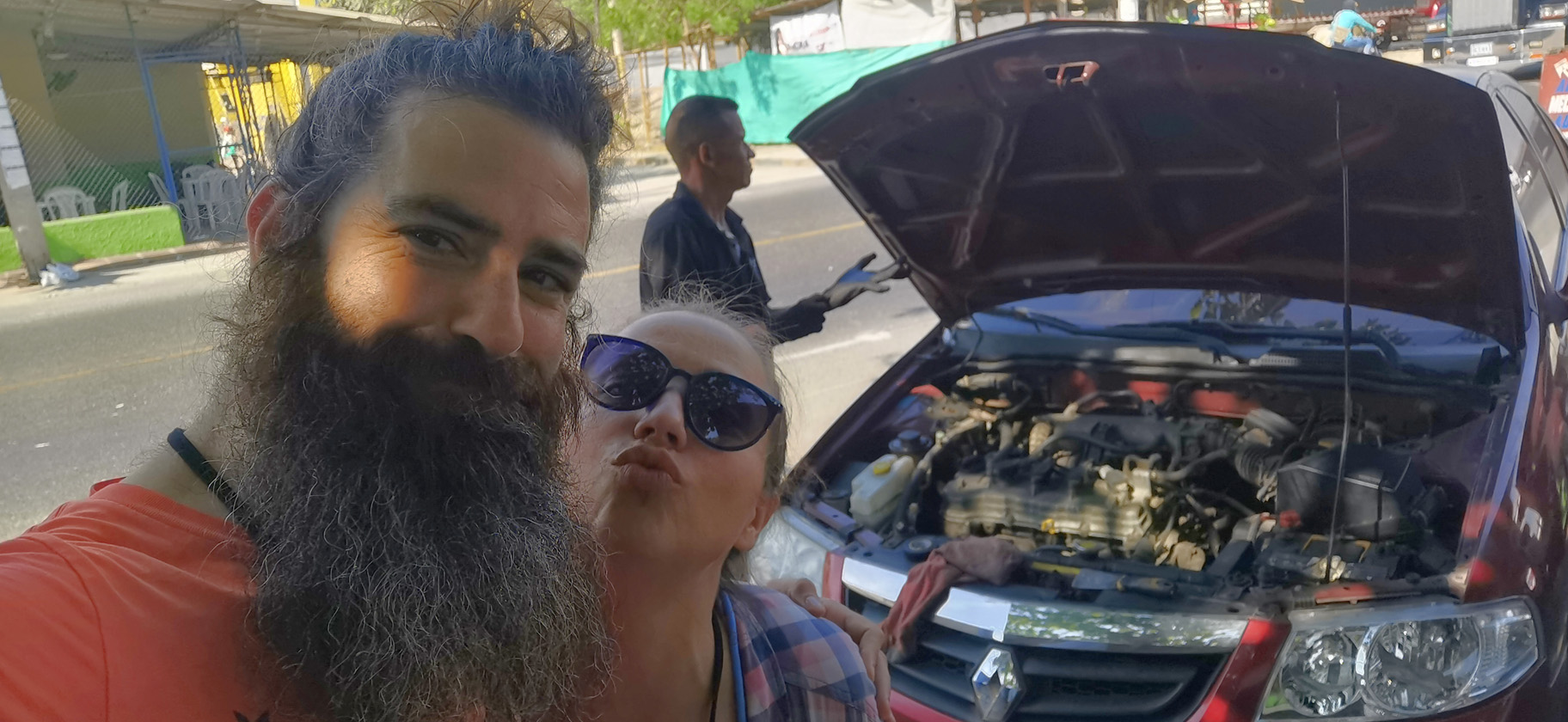I know Way Too Much About Fuel Pumps Now
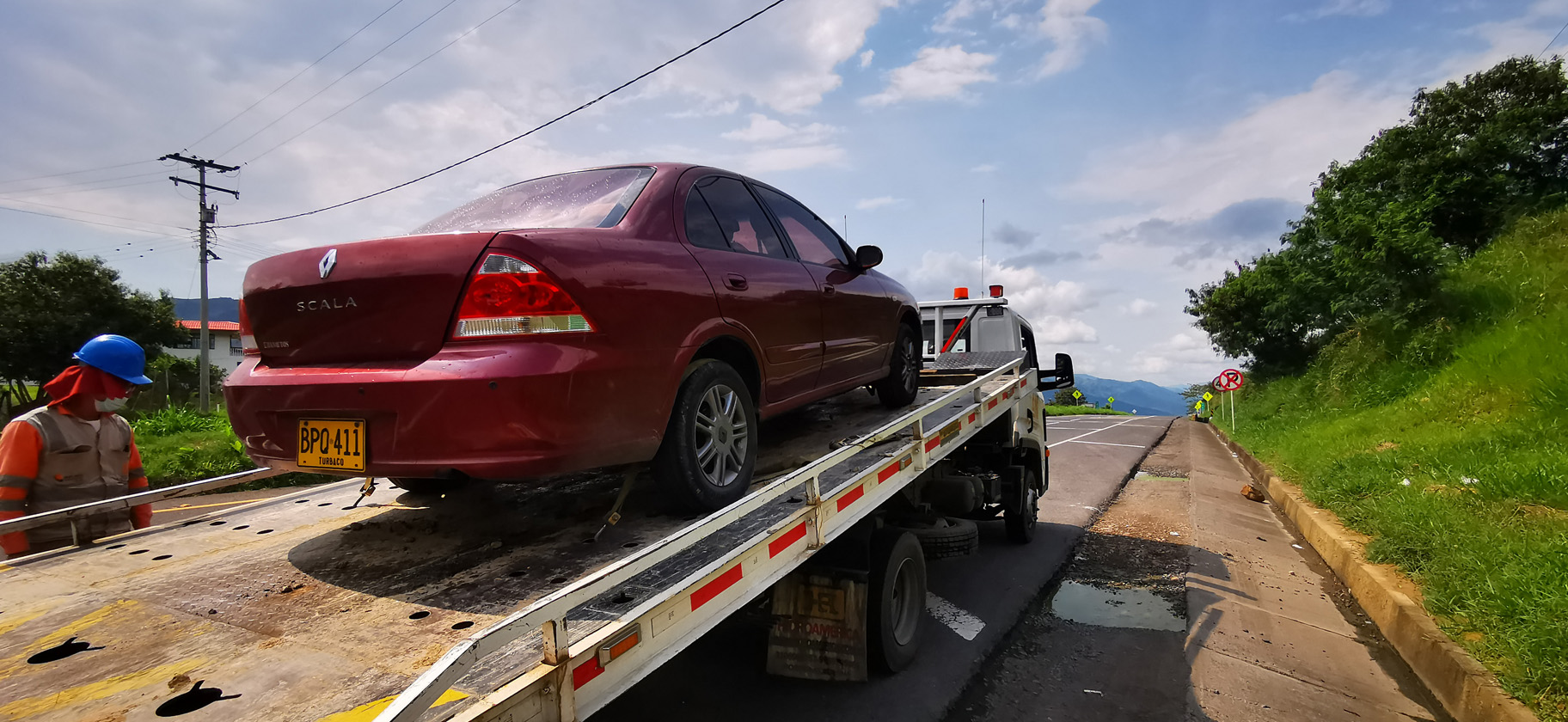
Ask me about the speed required by your ISP to upload 100 gigabytes of high-definition video in a 24 hour period and I would have a quick and easy answer for you. If you want to know about your PC’s system requirements for running various programs and applications, I’m your guy. Tell me about your work requirements, your entertainment needs, and your internet browsing habits and I am the man to ask about what computer is right for you. But ask me about the inner workings of a combustion engine and I will simply shrug my shoulders in dismay. They used to teach shop in schools and it wasn’t about understanding consumer interests and purchasing habits or how to get a great deal on modern appliances – it was about how to build, restore, and maintain automobile engines. Once upon a time, young men would stride confidently into their driveway and open up the hood of their car to show their friends. They would pump out their chests and brag about engine torque and horsepower and how fast they could accelerate from 0 to 100 kph. In the digital age, the young men who once stood proudly next to their first car now boast about their computer’s SSD storage capacity, how many cores their CPU has, and how many gigabytes of unified memory have been installed into the computer’s architecture. The realm of automobile maintenance now rests in the hands of an exclusive cabal of grease monkeys, real men’s men, with calloused hands and who are well distanced from the bulk of enthusiasts huddled around their video game consoles.
Over the years, I have owned a few cars and none of them have been high-performance automobiles so I have spent my share of time with mechanics making sure that my cars received only the most necessary services. I know that gapped sparkplugs and regular oil changes are essential to the smooth running of the engine. I know about brake pads and how they wear down and need to be changed every 30,000 kilometres or so. I know the basic stuff like not to let the gas gauge fall all the way to empty or else the car will not run. Most of what I know relates to basic safety and making sure that the car can continue to roll forward. Check engine lights can flash on for any number of reasons some of which will barely ever slow you down and ignoring the check engine light on an old car has become a popular trope in modern sitcoms.
The northern coast of Colombia that looks out over the Caribbean is home to its share of beach towns where locals and travellers can kick back and relax and play in the surf. To the east of the Magdalena river between the industrial city of Barranquilla and the resort town of Santa Marta lie the swamp lands of the Ciénaga Grande Santa Marta a full 50 kilometres across from west to east and from north to south. A highway called the Troncal del Caribe runs along a narrow strip of semi-solid earth and rock between the northern edge of the swamp and the Caribbean Sea. We were about halfway along this highway, some 30 kilometres from the eastern edge of the swamp and the town of Ciénaga, when Tranquilo began to behave badly.
The speed limit along the Troncal del Caribe is about 80 kph, and travelling up to that speed Tranquilo would suddenly fart like she had eaten bad gasoline and then bump and bounce forward violently. We had been travelling for two days and were barely 150 kilometres outside of Cartagena where our journey had started. Southern Argentina was 10,000 kilometres away so this was too early to be having car trouble. When setting out on such an ambitious undertaking, I expected something could wrong but not halfway between our first and second destinations.
Jenia’s older brother is one of those modern automobile enthusiasts – the elusive unicorn that has balanced his interests between his computer and his car – and our cell phones had enough signal to send messages back and forth to Russia for insights into what could be going wrong. Looking toward my dashboard I noticed that the engine temperature gauge which, when the engine was running, would normally sit halfway between hot and cold would suddenly drop all the way down to cold which would then prompt Tranquilo’s spasms. Jenia’s brother’s diagnosis was that Tranquilo’s fuel pump was likely having trouble communicating with “the brains of the car”.
We managed to bump and fart our way a further 30 km in low gear and with the hazard lights on, to the town of Ciénaga where we spotted signs for a mechanic and promptly pulled ourselves off the road. Using my broken Spanish I explained to one of the mechanics what we were experiencing and he immediately hinted that the problem was the fuel pump.
The fuel pump sits underneath, and is accessible by pulling out, the rear seats. The mechanics remove the pump by twisting off the cap and pulling out the unit. The mechanic drew from the centre of the yellow plastic unit a cylinder called the bomba and told me to hold it. According to him, a hot fuel pump meant that it was finished and needed to be replaced. To me, the cylinder was not overly hot to the touch, but I trusted his expertise. I was also dependent on him to get us back on the road, so I refused to second-guess him. The work and the new cylinder cost me 400k pesos in cash, but we were back on the road toward Santa Marta within the hour.
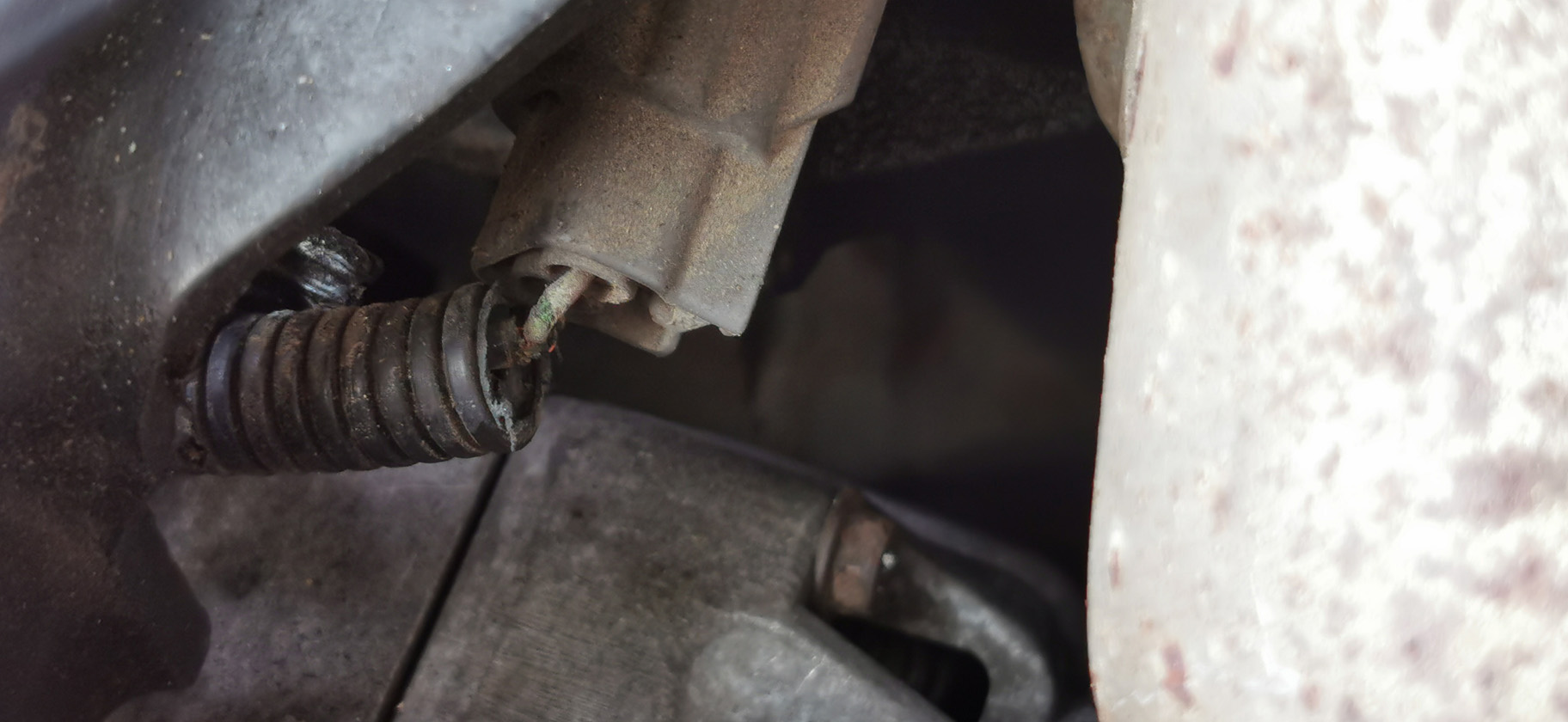 We got about 20 km further on to Santa Marta when Tranquilo began spasming again. Without a second thought, we turned the car around and headed back to Ciénaga. The mechanics were surprised to see us return. Translating from Russian to English to Spanish, we explained Jenia’s brother’s theory that the problem was electronic, not mechanical. Where the fuel pump and the engine communicate happens under the hood and, upon inspecting the various wires, the likely culprit was heavily frayed and oxidized. It cost me another 30k pesos, but now the fuel pump and the engine were good friends again speaking politely with one another and the fuel pump problem was something that we put behind us and the timing of whose failure we chalked up to an unfortunate coincidence.
We got about 20 km further on to Santa Marta when Tranquilo began spasming again. Without a second thought, we turned the car around and headed back to Ciénaga. The mechanics were surprised to see us return. Translating from Russian to English to Spanish, we explained Jenia’s brother’s theory that the problem was electronic, not mechanical. Where the fuel pump and the engine communicate happens under the hood and, upon inspecting the various wires, the likely culprit was heavily frayed and oxidized. It cost me another 30k pesos, but now the fuel pump and the engine were good friends again speaking politely with one another and the fuel pump problem was something that we put behind us and the timing of whose failure we chalked up to an unfortunate coincidence.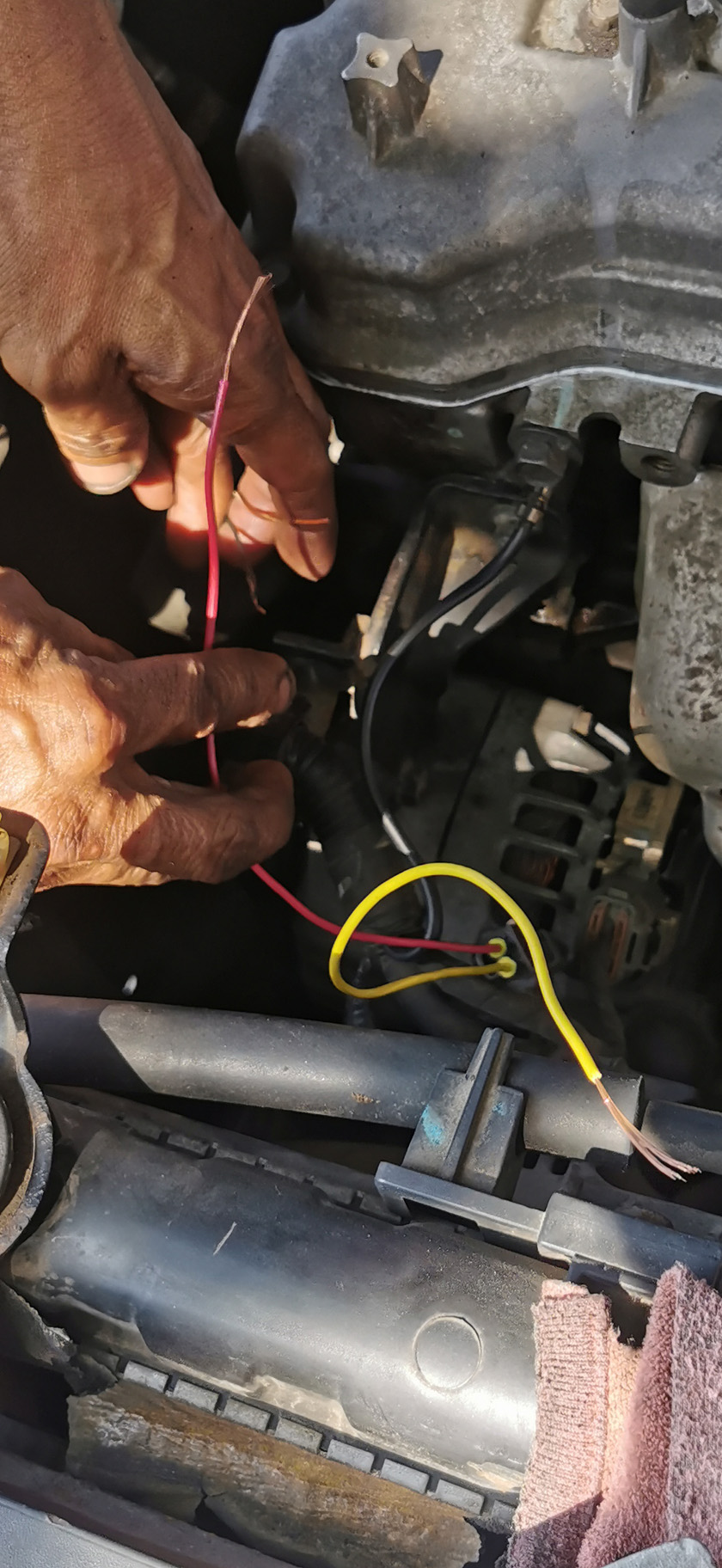
Our journey took us southward through the Caribbean lowlands to Mompox and into the eastern cordillera. We sailed on to Giron, and to small villages surrounding San Gil, eventually making our way to Villa de Leyva before we finally reached the capital, Bogotá. The roads were not always smooth. The route was often slow and winding through the hills, but the views of wild, palm-covered, mountains were beautiful and Colombia was beginning to show us her charms. Now three weeks into our road trip and we had settled into a lifestyle which had us progressing along our route at a pace that was comfortable and where we could still take time to stop and enjoy what the country had to offer. Most importantly, after a rocky start, Tranquilo and I had begun to establish trust with one another. I had invested no short sum of money and the expectation was that Tranquilo and I would be together for quite a while, so trust was essential.
We spent more than a week in Bogotá and by the time we left I had less than a month remaining on my Colombian entry and well over 1500 kilometres to drive. Though it meant crossing the cordilleras and driving several hundred kilometres north back toward Cartagena, no trip to Colombia would be complete without a visit to Medellin. The drive from Bogota is a little more than 400 km and takes over 8 hours which was too ambitious for me in a country like Colombia where the terrain is unfamiliar to complete in a single day, so I planned for us to stop at a hotel a little over halfway through the journey near the town of Doradal.
Heading west that morning through the hills was slow going on a two-way road but, after reaching the town of Guaduas, the road turned north and opened up into a 4-lane highway. For the first time in days I shifted into fifth gear and suddenly we were sailing. I felt like I was pushing the pedal pretty hard but it felt like we were slowing down. I figured we must just be headed uphill. I shifted down to get some acceleration going but still Tranquilo struggled. I instinctively shifted down again figuring that the incline could not be so steep that I couldn’t accelerate in as low as third gear but sure enough Tranquilo kept slowing down. I looked at my dash and all of the lights were on. We had stalled. I rolled Tranquilo over to the shoulder and silenced the engine and tried to start her again but the engine would not turn over.
Once again, we were sending messages back and forth to Jenia’s brother who suggested that a small piece of rubber may have come loose from underneath the pedal preventing the accelerator from understanding how to manage sending gas to the engine. He was right about the fuel pump, so there was no reason to second guess him now. Searching around the floor mats yielded no rubber pieces and even if we had found one, knowing from where it had come loose or where to put it was outside of my skill set even as we frantically sent photos back and forth. There was a small tienda just across the highway where some trucks had stopped to get a snack and some cigarettes and so I travelled over and asked for help. Several locals volunteered to have a look and many among them ventured their opinion as to the nature of the problem. The manager of the small store, which was nothing but a shed selling lollipops and chips and a few cold drinks out of a cooler, called the highway patrol and after about 30 minutes a very official looking truck came to our small stretch of highway. 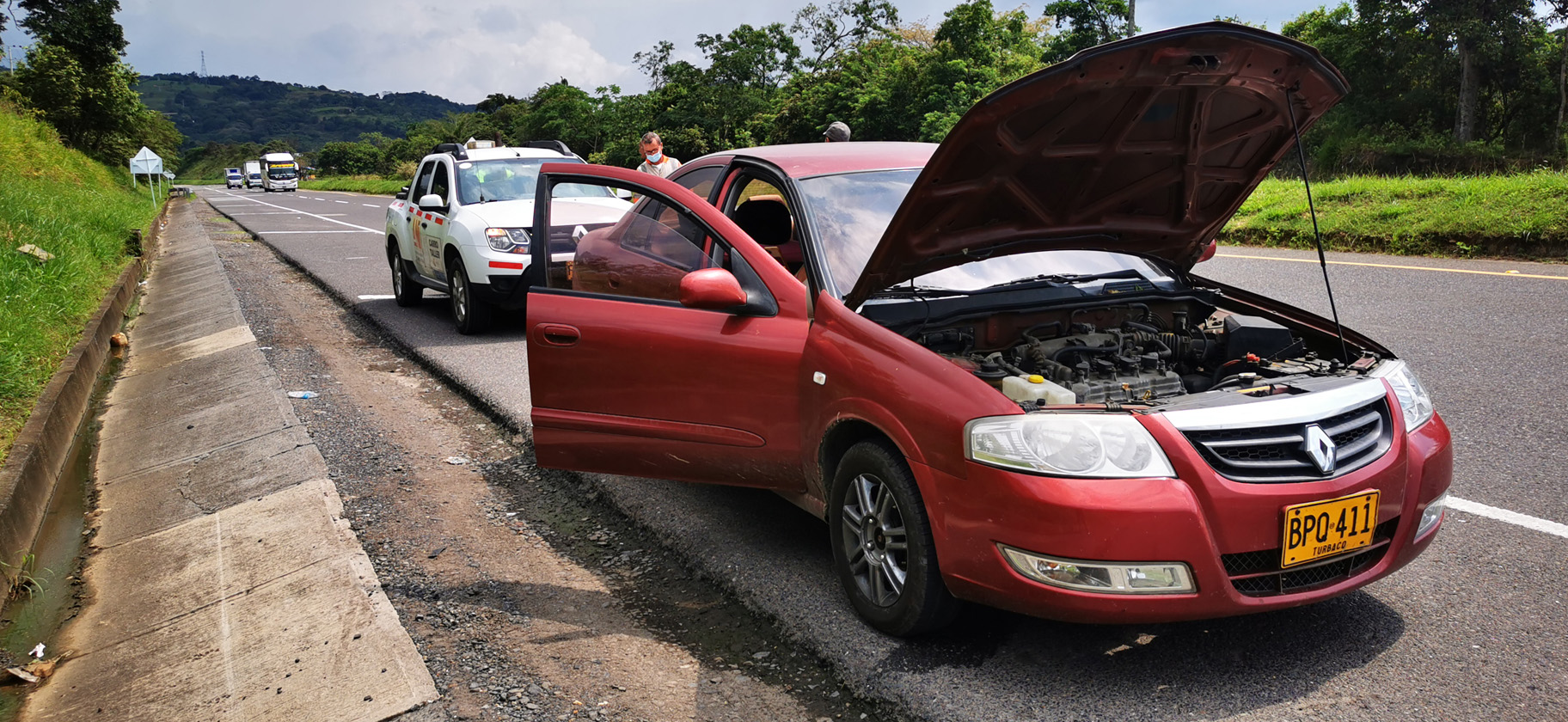 The highway safety official took pictures of our vehicle, asked me to sign some documents. He opened the hood and checked the sparkplugs to make sure that they were clean and would fire. After a few minutes, he called in a tow truck that hauled all of us back to Guaduas and dropped us off at a mechanic’s garage. Jenia kept whispering in my ear that they were going to ask us to pay for the world but when both the patrol man and the tow truck driver set out to leave I had to flag them down to try to pay them for their help and they flat out refused. Jenia was shocked. In Russia, she said, this would cost hundreds of dollars. And here they ask for no money! I can’t believe it!
The highway safety official took pictures of our vehicle, asked me to sign some documents. He opened the hood and checked the sparkplugs to make sure that they were clean and would fire. After a few minutes, he called in a tow truck that hauled all of us back to Guaduas and dropped us off at a mechanic’s garage. Jenia kept whispering in my ear that they were going to ask us to pay for the world but when both the patrol man and the tow truck driver set out to leave I had to flag them down to try to pay them for their help and they flat out refused. Jenia was shocked. In Russia, she said, this would cost hundreds of dollars. And here they ask for no money! I can’t believe it!
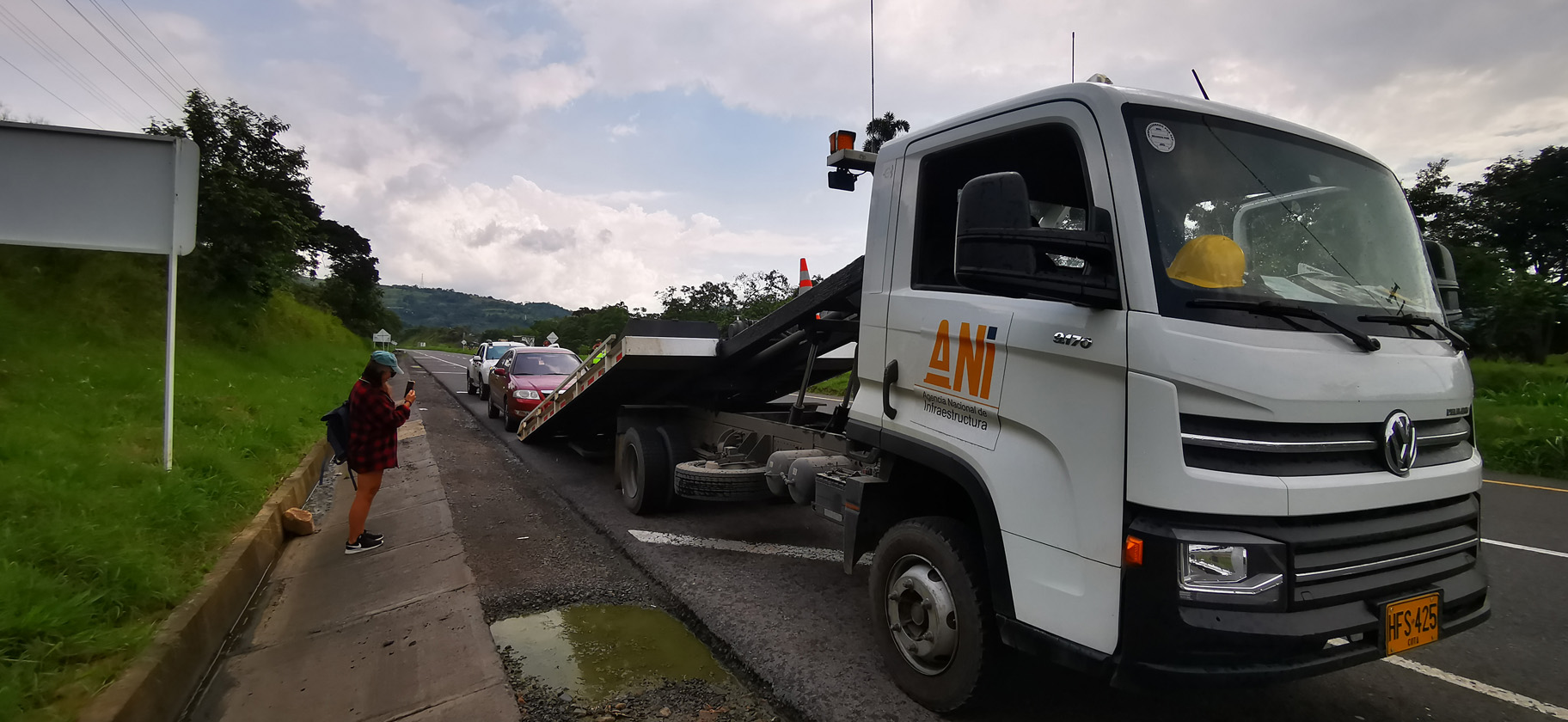
David who ran his small garage in the dusty town of Guaduas could not have been more than 30 years old. Diego was an older gentleman probably in his mid-fifties but, despite their ages, David was the master and Diego was the apprentice. They set up a pressure gauge and fitted it between some tubes in the engine. No pressure, they said. What’s the problem? I asked. It could be a few things, David replied. But can it be fixed? I asked. David shrugged his shoulders and smiled and said, We’ll see.
He instinctively went to the back doors and pulled off the rear seats and began to unscrew the cap for the fuel pump. No, no, no! I exclaimed. It cannot be the fuel pump. I just had it replaced in Ciénaga. David looked back at me contemplating this new information, pursed his lips together, looked down at where gasoline was now bubbling up out of the tank and said, Maybe it’s not the fuel pump, but let’s make sure.
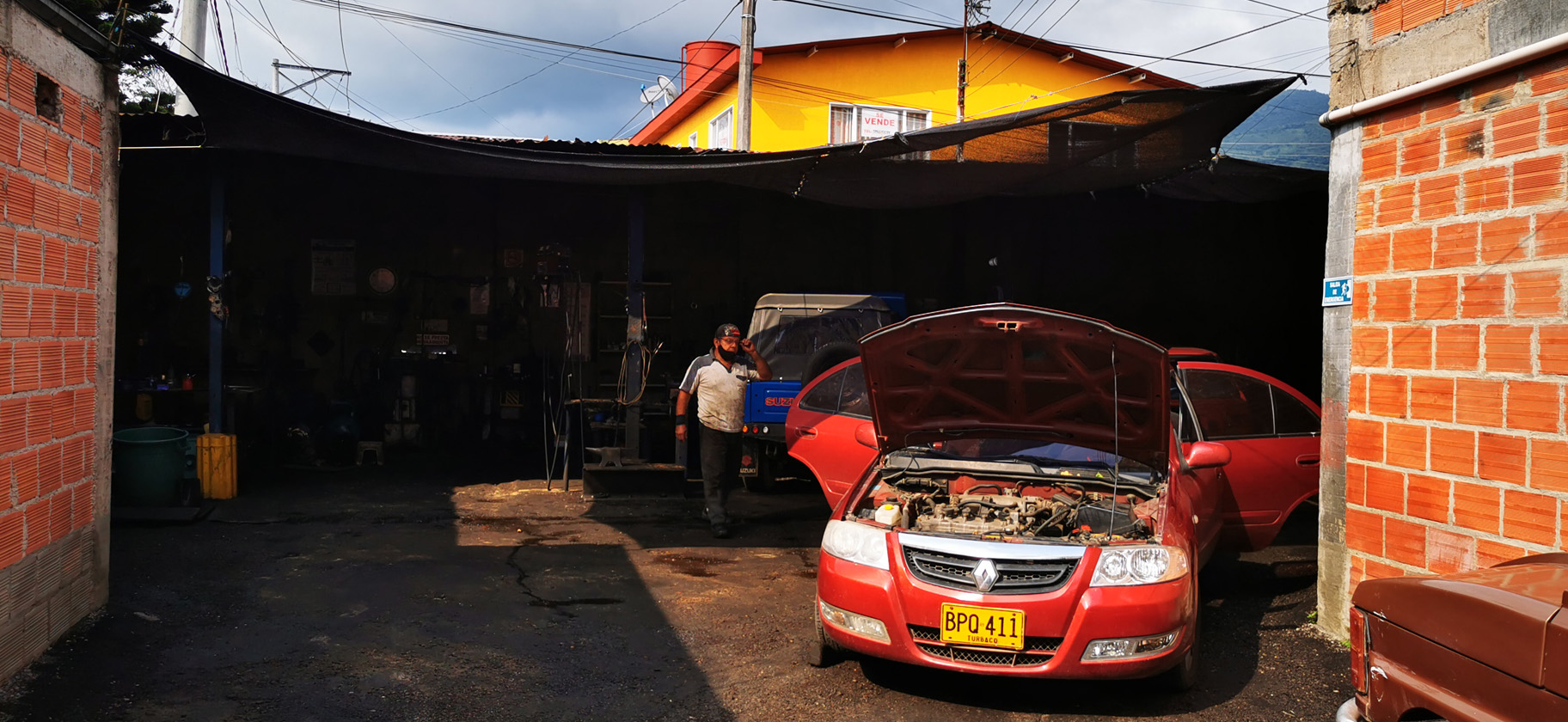
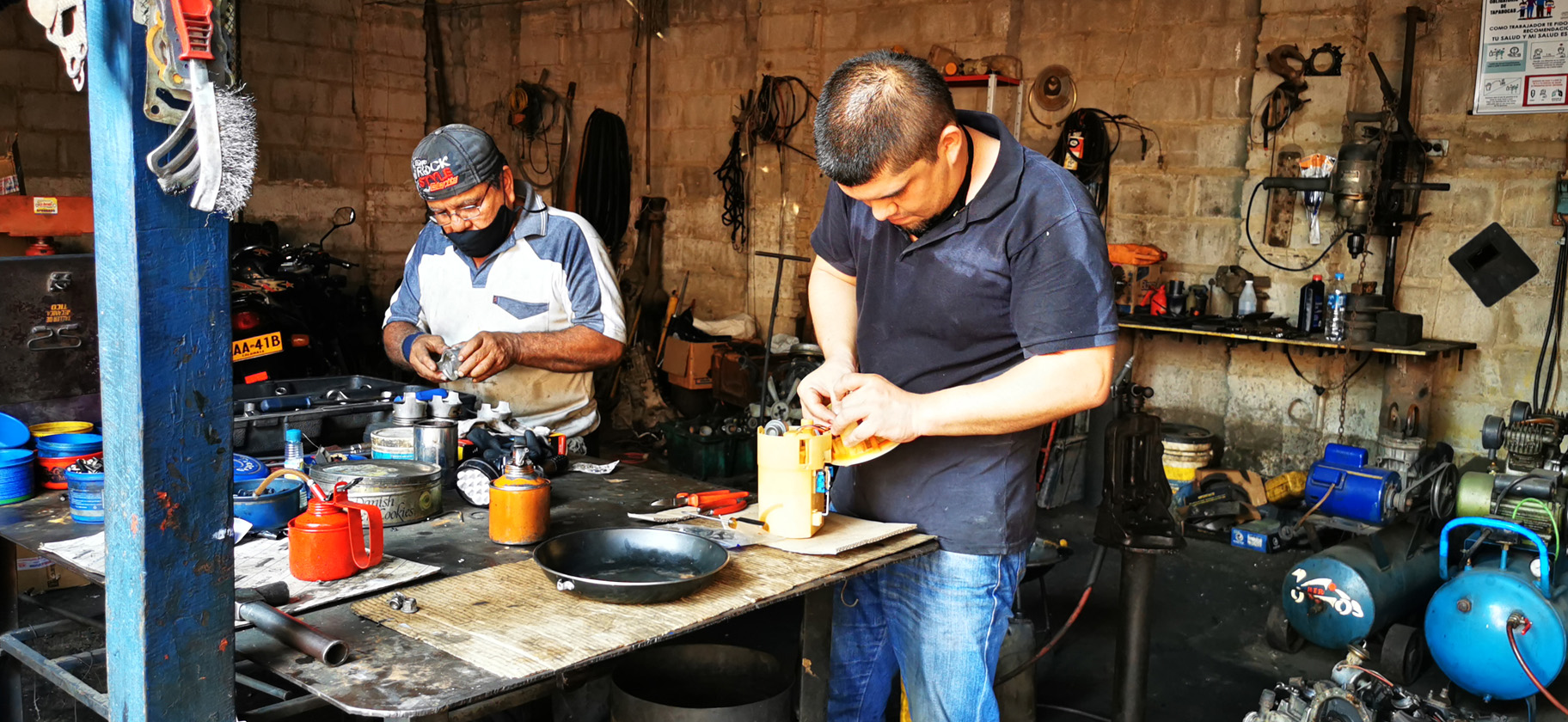
He brought the plastic yellow unit over to his workbench and began disconnecting wires and eventually detached the bomba and inspected it. Having previously spent 400k pesos not more than three weeks earlier, I felt the need to speak up. That bomba is brand new, I reminded him. David bobbed his head from side to side making up his mind as to how satisfied he was with my insistence that the bomba was, in fact, new.
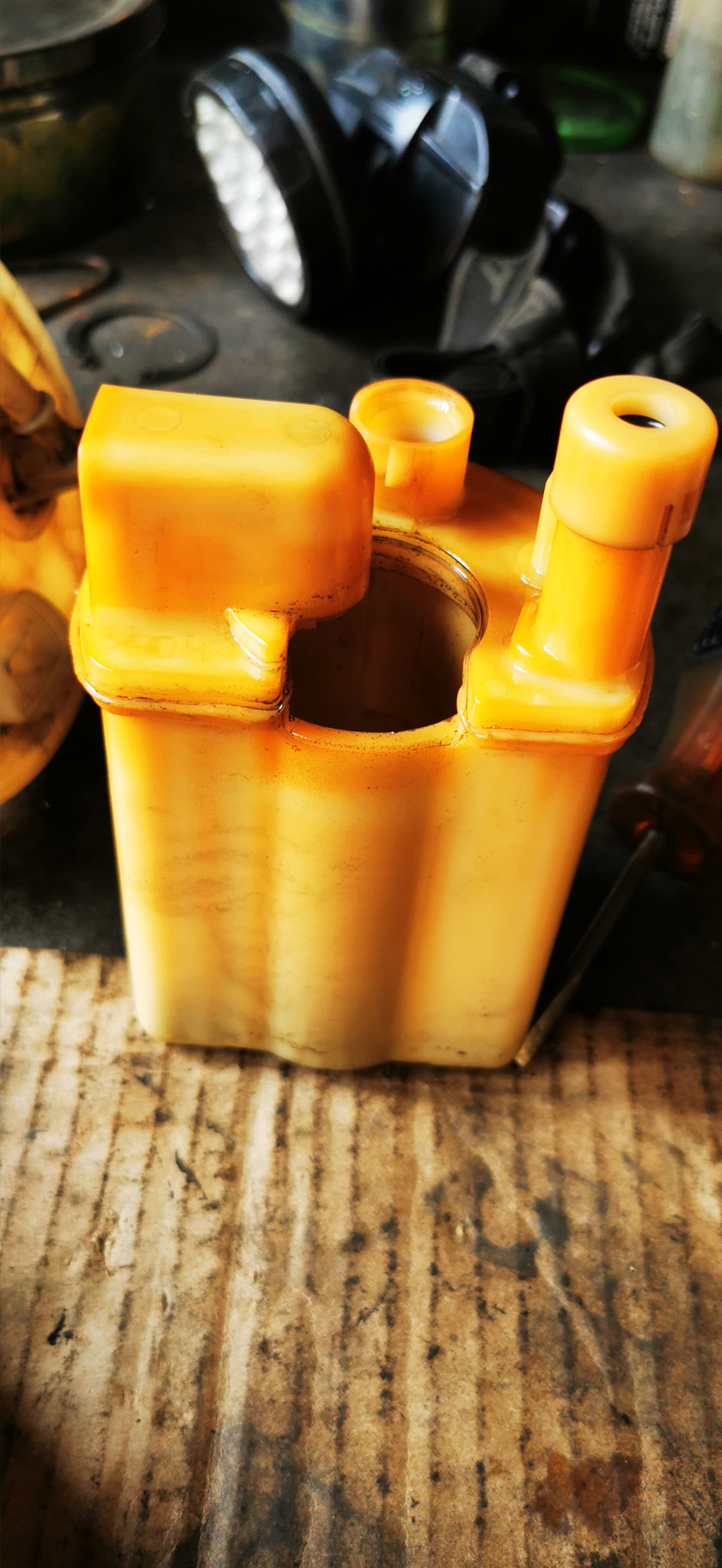 Maybe that other mechanic gave us shit China pieces, Jenia whispered to me. We had heard the stories and she was still skeptical about everyone who could help for fear that they would just try to take our money. But we had no power and I felt it wise to avoid interfering with those who were in the position to help us. The afternoon was beginning to wane and we still had over 120 kilometres still to drive. I had no intention of staying in Guaduas for the night if they even had a hotel, so whatever David was going to be able to do for me to get us back out on the road, I was going to hear him out.
Maybe that other mechanic gave us shit China pieces, Jenia whispered to me. We had heard the stories and she was still skeptical about everyone who could help for fear that they would just try to take our money. But we had no power and I felt it wise to avoid interfering with those who were in the position to help us. The afternoon was beginning to wane and we still had over 120 kilometres still to drive. I had no intention of staying in Guaduas for the night if they even had a hotel, so whatever David was going to be able to do for me to get us back out on the road, I was going to hear him out.
David continued to inspect the unit. This is a universal bomba and not specifically designed for this unit, he said. The filter is also really dirty. I think if I clean it and fix the contact points it should work. But the bomba still doesn’t really fit. Ideally, you could change the whole unit but I don’t have that kind of thing here. I told him I was headed to Medellin in a few days and was expecting to do my routine oil change there. A mechanic there could probably get this part and you should probably change it, David said.
David took the unit apart and began to clean the filter by blowing air through it and gently tapping on it with a screwdriver. Occasionally he would spray gasoline through it to loosen up the muck and help the dirt drain out. After about a half hour of cleaning, he reinstalled the bomba which he demonstrated was a tad too small for it to fit comfortably within the unit. He managed to prop it up and fit it snug using a few thin rubber cylinders from an old tube that was about the same diameter. Lastly, he pulled out his soldering and stripped back some of the wires and soldered some of the connections to have sturdier contact. He refitted the fuel pump under the seats, got behind the wheel and turned the key in the ignition and sure enough, Tranquilo fired up. They checked their pressure gauge and the needle flipped from zero to the far side of the gauge. You should be okay to head back out on the road, David said with a smile on his face.
You’re MacGyver! I exclaimed. How much do I owe you? I asked David.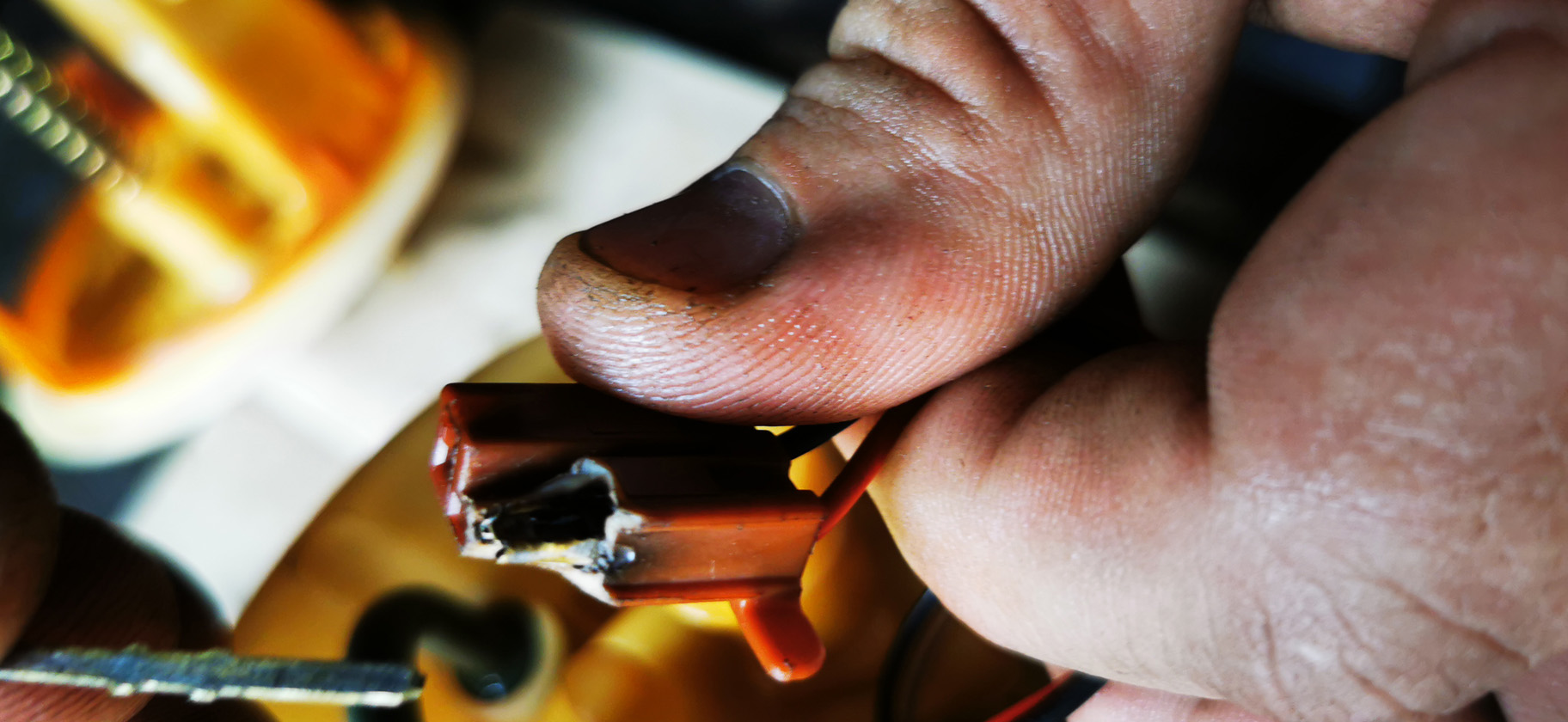
Fifty-thousand pesos, he said.
The whole ordeal in Guaduas had set us back four hours, but we were back on the road rolling along a stunning highway through the countryside between the cordilleras while the sun was setting and with confidence that we could make it to Doradal. Along the way, I put into perspective for Jenia what our breakdown had cost us. Our mechanic in Ciénaga had held us up for less than an hour but cost me more than 100$ – mostly for the bomba. In Guaduas, where we were not only towed but where David worked on our fuel pump for close to two hours, I paid a measly 50 thousand pesos (about $15). That was by far the most affordable emergency car service I have ever experienced in my life, I kept repeating until we finally arrived at our hotel.
Days later we made it to Medellin and Rafa got me in touch with his cousin Amaury who lived in Medellin and knew a mechanic that he trusted. Reinal worked at a greasy auto shop on the south side of town in Envigado. I dropped off Tranquilo and told him that I wanted an oil change and to check all of the basics like the liquids, the brakes, and rotating the tires. Using the best Spanish I could muster I told him about all of the problems that we had had with the fuel pump and the likelihood that the whole unit would need to be replaced and I insisted that he focus on making sure that the fuel pump would not be a problem for the rest of our trip. When I returned the following day to collect the car, I paid Reinal the 500 thousand pesos (about $150) he asked for which included the maintenance as well as a part that had to be replaced for the back brake. What about the fuel pump? I asked. Reinal brushed the question aside and told me to forget about it. He said that the mechanic in Guaduas obviously did a great job and that to replace the unit would be a waste of money. I reminded Reinal that I was planning to drive all the way to southern Argentina but he just smiled and told me to have fun.
We had barely been driving for a month and by the time we reached Medellin I had already spent close to $300 on repairs. Three hundred dollars on lessons. Lessons to increase my vocabulary and improve my Spanish; Lessons on what to expect from roadside assistance in Colombia; Lessons on how to speak with mechanics; and I can now tell you, at least as far as 2011 Renault Scalas are concerned, where the fuel pump is located, how it connects electronically to the engine, what the bomba is and why it is important, how to know if it has failed, how to check if the fuel pump’s filter might be too dirty, and the manner in which the car will fail if any of these parts of the fuel pump becomes damaged. This was not the education I thought I had signed up for and all of what I learned is way more than I ever wanted to know.
